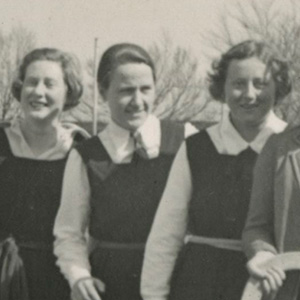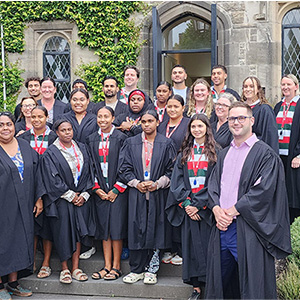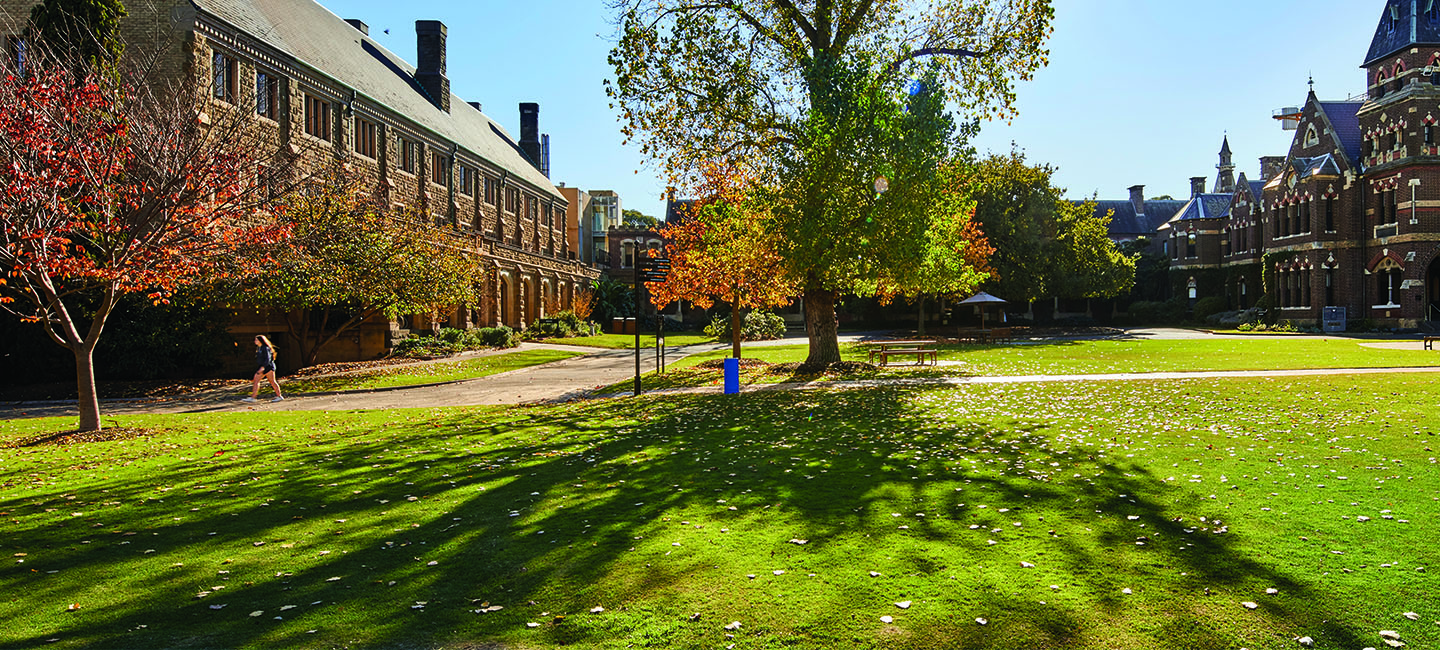

Aerial photographs and plans in the early 1920s aptly illustrate the development of the precinct, to be known as the ‘Laundry Yard’, in the early twentieth century. Returning medical students after the First World War had successful petitioned Trinity to construct a garage for the still relatively novel ‘must-have’ for the adventurous with means – the motor car.
A fowl house sat on at the eastern boundary, while a long, low building – purportedly constructed from pilfered sandstone from the recently erected Catholic Newman College opposite – was constructed as the residence for Trinity’s inaugural chaplain in 1925. Feeding the mythology of the origins of the building materials, it was called Vatican.
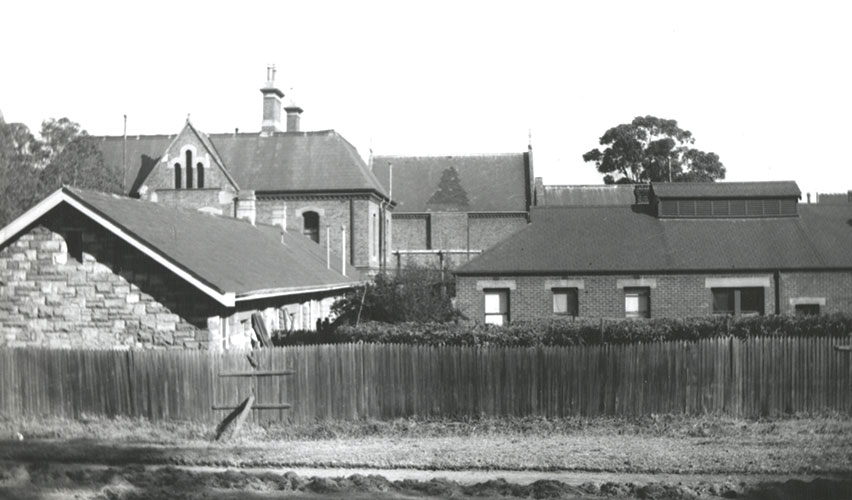
Vatican seen on the far left. Vatican's recycled sandstone has been used in Trinity's new residential building.
In the mid 1930s, a two-storey block was built on the site of the former fowl house to accommodate a growing number of domestic staff. In time it became known as Dorothy, with origins believed to trace back to L. Frank Baum’s popular story, The Wonderful Wizard of Oz. In the decades after World War II, many alumni came to associate the building as the home of the ‘Balts’ – post-war emigrants from the Baltic States, who found employment among the domestic staff of the College.
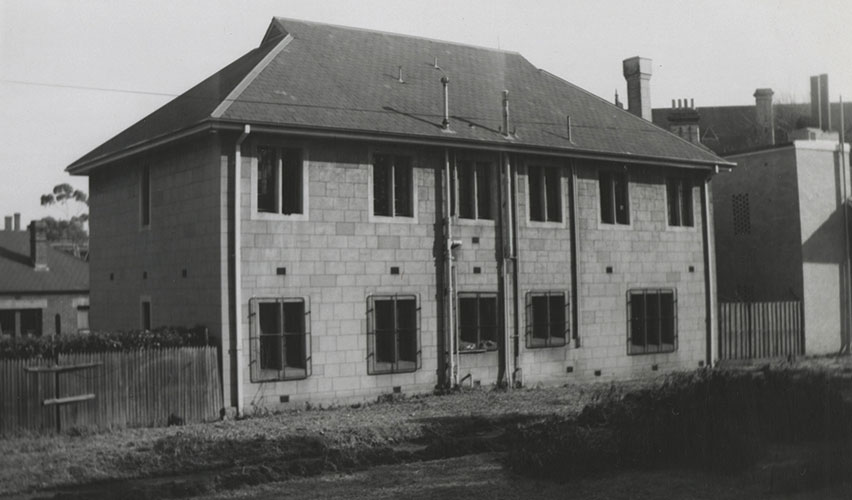
Dorothy when newly built.
In 1964 – with an ‘ancient and failing washing machine … mashing on, with frequent stoppages, in the Lower Clarke’s lavatory’ – the slightly infamous Trinity College groundsman Syd Wynne extended the laundry block, which had given its name to the precinct known as the Laundry Yard – at the northern end, and installed a ‘huge commercial-type one-button job, which, according to its makers, is idiot-proof’. The ‘immortal Madge’ who presided over the main College laundry might have seen her days dwindling, as the young male students were forced into an uncomfortable, if not terrifying position – doing their own laundry! It would remain the Trinity laundry well into the 1980s, far beyond the services of domestic staff being continued, before converting in the 1990s to Wynne Cottage, the early administrative centre of the then-new Foundation Studies program.
In 1981, a new addition graced the landscape with the construction of ‘Moorhouse’, a residential block comprised of four one-bedroom flats for married theological students. One of the first residents was a young theolog who would later leave his own mark on Trinity as the seventh warden, Andrew McGowan.
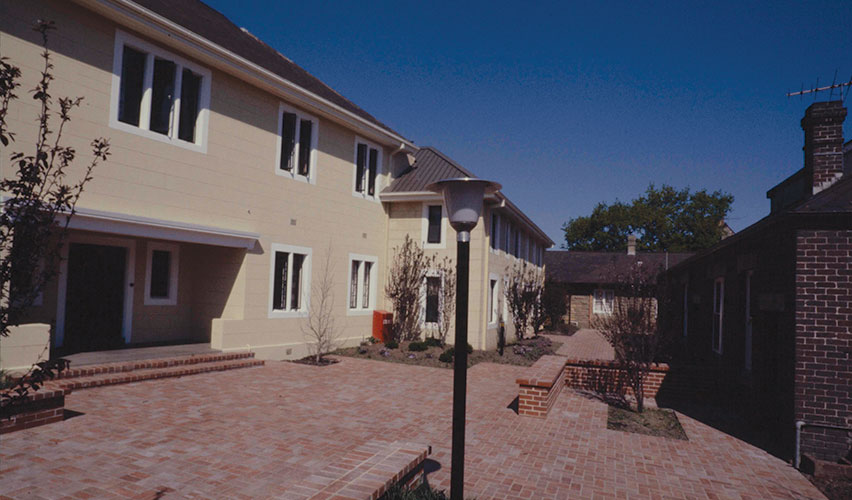
Moorhouse prior to its demolition.
Watch the video below to learn more about the Laundry Yard.
{^youtubevideo|(width)425|(height)264|(rel)True|(autoplay)False|(fs)True|(url)https://www.youtube.com/watch?v=Sd52tQMmfzk^}
Related News
-
News & Stories
- Our Theological School Student President's mission to champion a spiritual and welcoming environment
- Jack reaps the rewards after taking a leap of faith on Trinity College
- Trinity alum named in King's Birthday Honours 2025
- Trinity Deputy & Academic Dean appointed Fellow at Center of Theological Inquiry
- Meet Trinity's aspiring art curator Seb Moore
- Trinity College offers its congratulations to newly elected Archbishop of Melbourne, the Right Reve
- Events
- Art
- Music & Choir
- Campus Development Projects
- Visiting Scholars & Lectureships
- Accommodation for Visitors
- Short Programs
- Work at Trinity




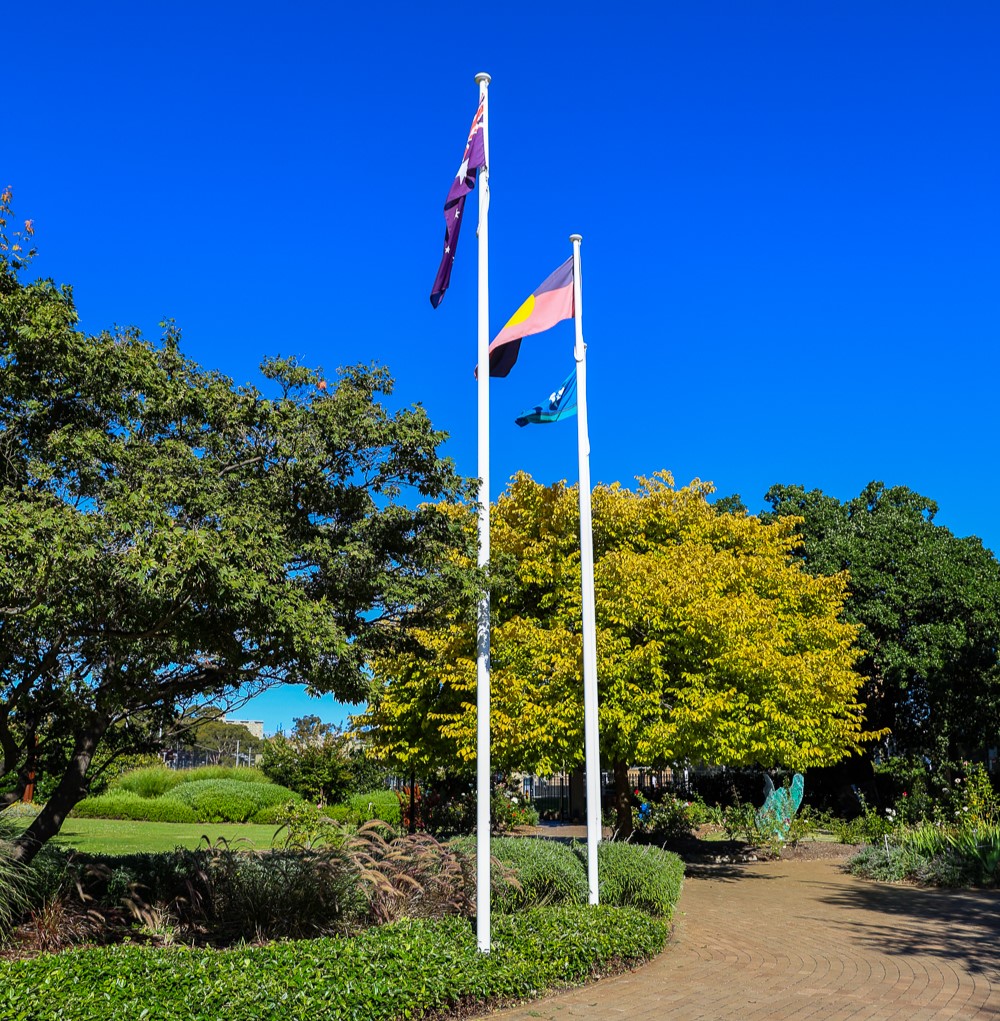
.jpg?width=300&height=300&ext=.jpg)
